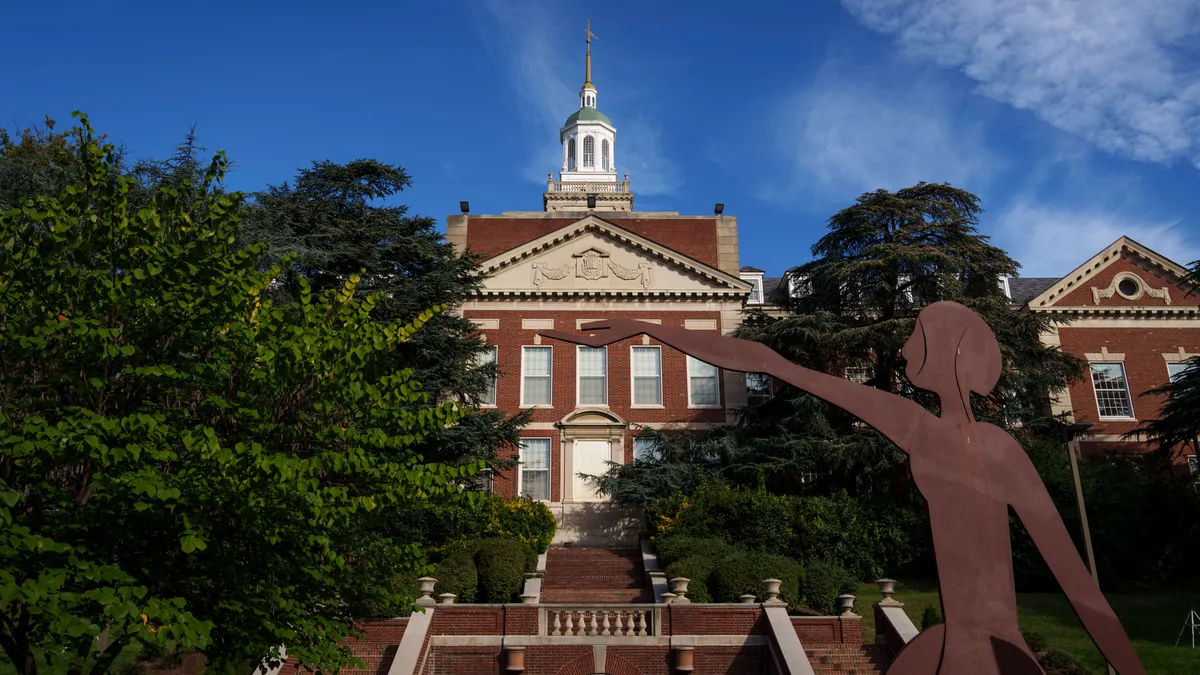Universities and colleges across the U.S. are struggling to finance not only the construction of new buildings, but to maintain and repair their existing ones. And according to educational asset consultancy group Sightlines, that assessment would be understating the magnitude of the problem.
The group's "State of Facilities in Higher Education: 2014 Benchmarks, Best Practices & Trends" report indicates that U.S. university and college capital spending has decreased 10% since 2007, while operating budgets for facilities management have only increased 1% annually since the end of the recession. The campus maintenance backlog has risen 17% since 2007 to what Sightlines estimated at approximately $30 billion. The University of Washington in Seattle alone shoulders about $1 billion of that figure. The country's university system expanded in the 1960s and 1970s to accommodate increased enrollment but suffered massive funding cuts during the Great Recession. Sightlines said that as a result, more than half of all university buildings are in need of either significant upgrade or replacement.
In an era when state-of-the art facilities are necessary to draw top-notch staff as well as students, university and college administrators are left with the painful process of deciding which projects are a go and which will be shelved for yet another year.
Making the tough decisions
Some schools, like private Beacon College in Leesburg, FL, are leaving the construction funding decisions up to third-party experts. Tom Brown, the school's director of human resources and risk management, said Beacon decided to contract its facilities management to Sodexo. This allows Beacon to take advantage of the "economies of scale," he said, that would otherwise be out of reach to a school with a just a few hundred students. For example, Brown said Sodexo's access to vendor discounts allows the facilities manager to stretch the school's budget, which is largely dependent on tuition and an annual fundraising campaign.
Even with those advantages, Brown said the school still must prioritize its maintenance and construction budgets, particularly with a current expansion through downtown Leesburg underway. Upgrades and improvements that are of the biggest benefit to students — such as campus beautification, more office and classroom space and athletic fields — go to the top of the list, but sometimes the decisions aren't clear-cut, according to Brown. "It's a balancing act," he said. "You have to maintain buildings that you have, but you also have to expand as well."
No matter what the enrollment size or endowment of a university or college, there is always a struggle as to where to allocate funds, according to Tony Miliote, vice president of the tri-state institutional division for Shawmut Design and Construction. Shawmut counts Harvard, Yale and New York University among its clients, but despite healthy construction budgets, "It doesn’t mean you have unlimited funds," Miliote said. "No one has that." No matter the school, there's always the fiduciary responsibility of deciding which project will return "the most bang for the buck," he said.
What students (and faculty) want
Jessica Brumley, vice president of facilities management at another private Florida college, Nova Southeastern University, agreed that there is a struggle with construction funds, as institutions try to attract the best faculty and the most talented students with state-of-the-art facilities.
Case in point: Nova, which is classified as a research university, is opening its new Center for Collaborative Research (CCR), a 215,000-square-foot, six-story facility outfitted with the latest equipment. "The purpose of this facility is really to get us to the next level," she said. Approximately 85% of Nova's tuition proceeds go to fund operations, so the school has embarked on a $250 million fundraising campaign, a portion of which is earmarked for capital improvements.
Miliote said the decision regarding which upgrades and renovations to pursue is sometimes a default one made by the current generation of students. "It's a very different experience from when I went to school 25 years ago," he said. The student focus has turned to better dining and dorm experiences as well as classroom settings that allow for more digital, mobile and technology-based learning environments. All of this, Miliote said, is an attempt to retain current students and attract new ones.
Exploring other funding options
Brumley said that unlike state universities and colleges, Nova must rely on its own resources to finance projects. In contrast to the University of California Merced, which opted to handle its $1.34 billion campus expansion as a public-private partnership (P3) with the Plenary Group, Brumley said the Florida school hasn’t been able to find the right relationship to make a P3 a viable option.
"We have looked at P3s, but when you start to dig into the details of what it takes to make it work, you would have to be very hands-off," she said. "There's a certain level of facility quality we expect, and we have not yet found where a P3 would give us what we're looking for. We'll continue to explore (that option) and haven’t ruled it out." On the plus side, Brumley said that despite not having state support, "being a private institution gives us a little more flexibility. It makes us more nimble."
But the day-to-day decisions still involve the question of how to tackle the nationwide challenge of new space versus deferred maintenance. "We've recognized it and are trying to get our arms around exactly what needs to be done," Brumley said.

















